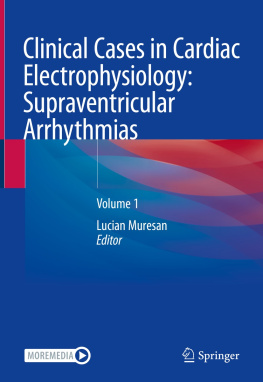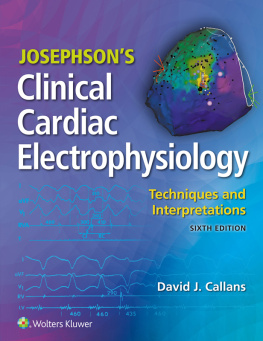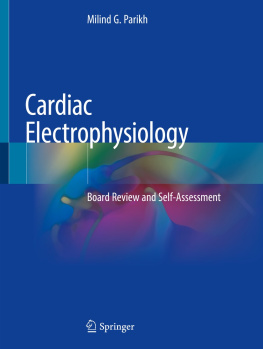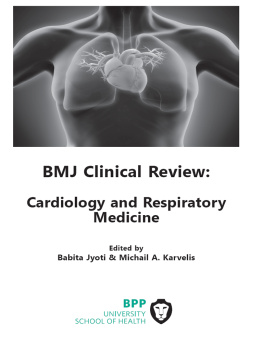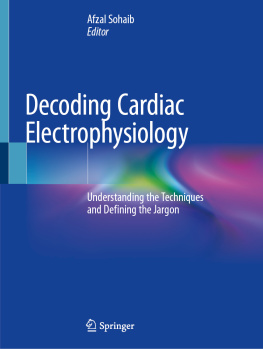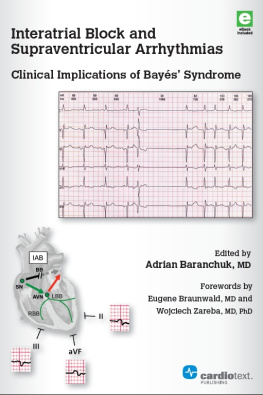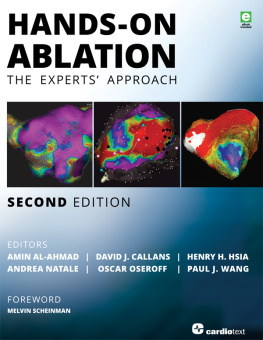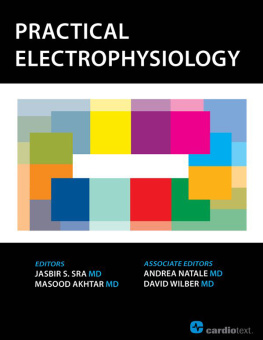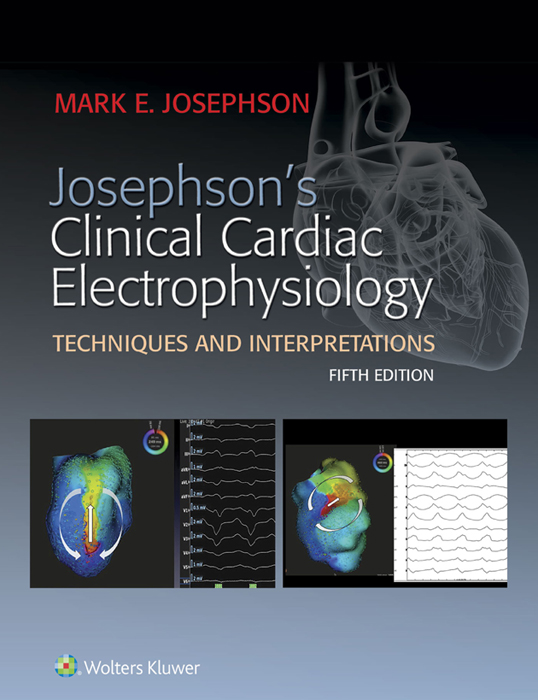Fifth Edition
JOSEPHSONS
Clinical Cardiac Electrophysiology
Techniques and Interpretations
Mark E. Josephson, MD
Herman C. Dana Professor of Medicine
Harvard Medical School
Chief of the Cardiovascular Division
Beth Israel Deaconess Medical Center
Director, Harvard-Thorndike Electrophysiology Institute and Arrhythmia Service
Beth Israel Deaconess Medical Center, Boston, Massachusetts

Acquisitions Editor: Julie Goolsby
Product Development Editor: Andrea Vosburgh
Marketing Manager: Stephanie Kindlick
Production Project Manager: David Saltzberg
Design Coordinator: Steven Druding
Manufacturing Coordinator: Beth Welsh
Prepress Vendor: Aptara, Inc.
5th edition
Copyright 2016 Wolters Kluwer.
351 West Camden Street | Two Commerce Square/2001 Market Street |
Baltimore, MD 21201 | Philadelphia, PA 19103 |
4th edition 2008 by Lippincott Williams and Wilkins
3rd edition 2002 by Lippincott Williams and Wilkins
2nd edition 1993 by Lea & Febiger
All rights reserved. This book is protected by copyright. No part of this book may be reproduced or transmitted in any form or by any means, including as photocopies or scanned-in or other electronic copies, or utilized by any information storage and retrieval system without written permission from the copyright owner, except for brief quotations embodied in critical articles and reviews. Materials appearing in this book prepared by individuals as part of their official duties as U.S. government employees are not covered by the above-mentioned copyright. To request permission, please contact Wolters Kluwer at Two Commerce Square, 2001 Market Street, Philadelphia, PA 19103, via email at (products and services).
9 8 7 6 5 4 3 2 1
Printed in China
Library of Congress Cataloging-in-Publication Data
Josephson, Mark E., author.
[Clinical cardiac electrophysiology]
Josephsons clinical cardiac electrophysiology : techniques and interpretations / Mark E. Josephson. Fifth edition.
p. ; cm.
Previously published as: Clinical cardiac electrophysiology / Mark E. Josephson.
Includes bibliographical references and index.
ISBN 978-1-4511-8741-0
I. Title.
[DNLM: 1. Electrophysiologic Techniques, Cardiacmethods. 2. Arrhythmias, Cardiacdiagnosis. 3. Arrhythmias, Cardiactherapy. 4. Heart Conduction Systemphysiopathology. WG 141.5.F9]
RC683.5.E5
616.1207547dc23
2015018611
This work is provided as is, and the publisher disclaims any and all warranties, express or implied, including any warranties as to accuracy, comprehensiveness, or currency of the content of this work.
This work is no substitute for individual patient assessment based upon healthcare professionals examination of each patient and consideration of, among other things, age, weight, gender, current or prior medical conditions, medication history, laboratory data, and other factors unique to the patient. The publisher does not provide medical advice or guidance and this work is merely a reference tool. Healthcare professionals, and not the publisher, are solely responsible for the use of this work including all medical judgments and for any resulting diagnosis and treatments.
Given continuous, rapid advances in medical science and health information, independent professional verification of medical diagnoses, indications, appropriate pharmaceutical selections and dosages, and treatment options should be made and healthcare professionals should consult a variety of sources. When prescribing medication, healthcare professionals are advised to consult the product information sheet (the manufacturers package insert) accompanying each drug to verify, among other things, conditions of use, warnings and side effects and identify any changes in dosage schedule or contraindications, particularly if the medication to be administered is new, infrequently used or has a narrow therapeutic range. To the maximum extent permitted under applicable law, no responsibility is assumed by the publisher for any injury and/or damage to persons or property, as a matter of products liability, negligence law or otherwise, or from any reference to or use by any person of this work.
LWW.com
This book is dedicated to my familySylvie, Elan, Sydney, Rachel, Todd, Stephanie, Jesse, and particularly, to my wife Joanfor their love, support, and understanding. Joan, you have been the wind beneath my wings.
FOREWORD
Historical Perspectives
The study of the heart as an electrical organ has fascinated physiologists and physicians for nearly a century and a half. Matteucci who discovered the muscle bundle joining the atrial and ventricular septae that is known as the common A-V bundle or the bundle of His.
During the first half of the 20th century clinical electrocardiography gained widespread acceptance, and, in feats of deductive reasoning, numerous electrocardiographers contributed to the understanding of how the cardiac impulse in man is generated and conducted. Those researchers were, however, limited to observation of atrial (P wave) and ventricular (QRS complex) depolarizations and their relationships to one another made at a relatively slow recording speed (25 mm/s) during spontaneous rhythms. Nevertheless, combining those carefully made observations of the anatomists and the concepts developed in the physiology laboratory, these researchers accurately described, or at least hypothesized, many of the important concepts of modern electrophysiology. These included such concepts as slow conduction, concealed conduction, A-V block, and the general area of arrhythmogenesis, including abnormal impulse formation and reentry. Some of this history was reviewed by the late Langendorf. The diagrams in that manuscript are as accurate today as they were hypothetical in 1933. Much of what has followed the innovative work of investigators in the first half of the century has confirmed the brilliance of their investigations.
In the 1940s and 1950s, when cardiac catheterization was emerging, it became increasingly apparent that luminal catheters could be placed intravascularly by a variety of routes and safely passed to almost any region of the heart, where they could remain for a substantial period of time. Alanis et al. recorded the His bundle potential in an isolated perfused animal heart, detailing the electrode catheter techniques in dogs and humans, to reproducibly record His bundle electrogram, which paved the way for the extraordinary investigations that have occurred over the past two and a half decades.
At about the time Scherlag et al.
Beginning in the mid-1970s, Josephson and his colleagues at the University of Pennsylvania were the first to use vigorous, systematic, multisite programmed stimulation in the study of sustained ventricular tachycardia (VT) resulting from myocardial infarction, which allowed induction of VT in more than 90% of the patients in whom this rhythm occurred spontaneously.


